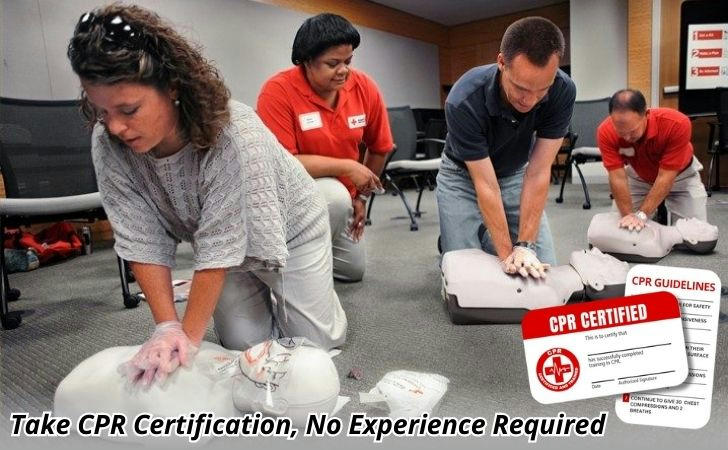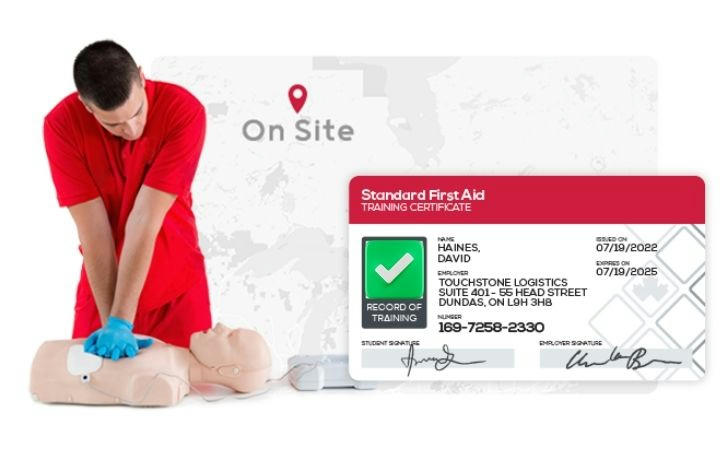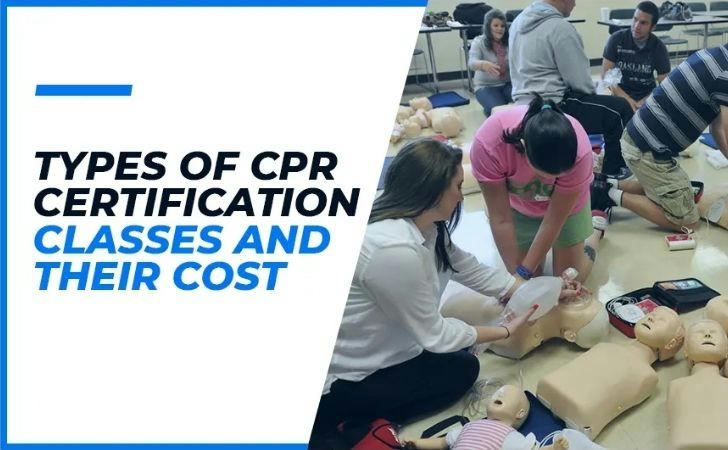Take a CPR Course and Earn Money While Saving Lives
Taking a CPR course will not only give you the necessary life-saving skills in 1-2 weeks, but it will also open up exciting career opportunities that can bring you a lucrative income of up to $98,000.There are no admission requirements. You can enroll today.

Why Learn CPR?
There are several compelling reasons to become CPR trained and certified:
High Demand: Many workplaces, educational institutions, and community centers require employees and volunteers to be CPR certified. This growing need ensures that certified instructors will find ample job opportunities.
Flexible Career: Instructors have the option to teach part-time, full-time, or as a side job, adapting to different lifestyle needs. This flexibility allows individuals to balance their teaching responsibilities with other personal or professional commitments.
Great Income: Independent CPR instructors can make between $50,000 and $98,000 per year, depending on their experience and the demand for their services. This income potential makes it a financially rewarding career choice.
Meaningful Work: Instructors have a direct role in empowering others with the knowledge to save lives during emergencies. The ability to teach life-saving skills can be incredibly fulfilling, knowing that you are making a difference in your community.

Basic Eligibility for CPR Instructor Training
Before enrolling in a CPR instructor course, you should meet these requirements:
Be at least 18 years old.
Complete a CPR instructor training program, which is available online, in-person, or as a hybrid option.
Pass the instructor certification exam and a monitored teaching evaluation to demonstrate your competency.
Earning Potential and Return on Investment
The training to become a CPR instructor usually takes about one to two weeks, which is a small time investment considering the career benefits. After certification, earnings vary based on job type:
| Job Type | Estimated Salary Range |
|---|---|
| Part-time | $10,000 to $30,000 per year |
| Full-time Employee | $35,000 to $60,000 per year |
| Independent Instructor | $50,000 to $98,000 per year |
This makes CPR instructor certification a strong investment with a quick payback, especially when considering the potential for growth in this field.
Role of a CPR Instructor
CPR instructors are certified professionals responsible for educating individuals and organizations on proper CPR techniques and the use of automated external defibrillators (AEDs). They conduct training sessions, evaluate participants' skills, and ensure adherence to the latest safety protocols. As an instructor, you enable communities to be better prepared for emergencies, sparking a sense of fulfillment and civic contribution.

Minimizing Training Costs & Financial Assistance
While becoming a certified CPR instructor will cost some money, there are ways to reduce or eliminate out-of-pocket costs:
Employer Sponsorship: Many employers in healthcare, education, and other industries offer tuition assistance to employees seeking certification. This can significantly reduce the financial burden of training.
Grants and Scholarships: Check with local government agencies and nonprofits to learn about financial aid programs that support healthcare career training. These resources can help reduce the cost of certification.
Exploring these avenues can make certification more affordable and accessible, allowing more people to enter this rewarding field.
Certification Pathway
To become a certified CPR instructor, follow these steps:
Obtain CPR Certification: If you are not already CPR certified, complete a provider course to learn the techniques.
Choose an Accredited Instructor Course: Select programs accredited by organizations like the American Heart Association (AHA), American Red Cross (ARC), or Health & Safety Institute (HSI).
Complete Online Prerequisite Training: These cover adult learning concepts and instructional techniques, preparing you for effective teaching.
Attend Practical Instructor Training: Engage in in-person or hybrid classes that include hands-on teaching practice, allowing you to apply what you've learned.
**Undergo Evaluation:**Your initial teaching session will be observed and evaluated by certified trainers to ensure instructional quality and adherence to standards.
FAQs about Becoming a CPR Instructor
How long does it take to become a CPR instructor?
The process usually takes 1-2 weeks, depending on the training program and class schedule.
Can I become a CPR instructor online?
While some courses can be completed online, you must take an in-person skills assessment to demonstrate your proficiency.
What is the cheapest way to get certified?
Look for employer sponsorships, scholarships, and used equipment to cut costs. Many organizations offer financial assistance for training.
Can I teach CPR without certification?
No, you must be legally qualified to teach and issue a valid CPR certificate. Teaching without certification can have legal and professional consequences.
Conclusion
Becoming a CPR instructor requires an initial investment of time and money, but the rewards—both personal and financial—are substantial. The profession offers flexibility, high demand, and the opportunity to make a genuine impact on public health and safety.
By leveraging financial aid options, carefully planning your training path, and committing to providing quality education, you can build a rewarding career in CPR instruction. Whether you choose to work part-time or full-time, CPR instruction opens the door to meaningful work that pays well.
If you’re ready to make a difference while securing financial stability, now is the perfect time to begin your journey as a certified CPR instructor. With proper training, dedication, and support, you can empower your community and build a fulfilling, well-compensated career saving lives.
